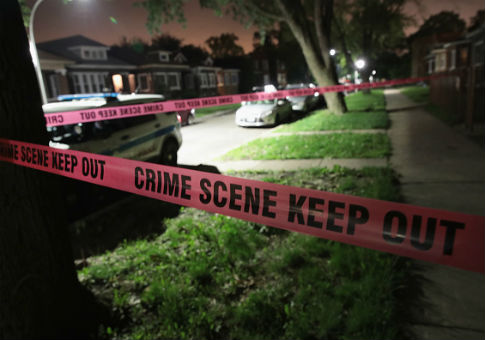Total violent crime declined slightly in the first half of 2017, according to data released Tuesday by the FBI, but murders continued to increase, albeit at a slower pace than over previous years.
The new data, part of the FBI’s Uniform Crime Reporting program, which aggregates data from more than 13,000 law enforcement agencies nationwide, compares statistics from the first half of 2017 with the same numbers from the first half of 2016.
The overall violent crime rate declined by 0.8 percent in the first half of 2017 as compared against the first half of 2016. That drop was precipitated in large part by declines in the rates of rape (down 2.4 percent), robbery (down 2.2 percent), and aggravated assault (down 0.1 percent).
However, the rate of murder and nonnegligent manslaughter increased by 1.5 percent over the same period. Significantly, that increase came in spite of a 1.9 percent decline in the murder rate in cities with a population of one million or more (which includes Chicago, but not high-crime Baltimore or Washington, D.C.). That drop is compensated for by an increase in the murder rate in smaller cities, including a shocking 18.7 percent increase in the murder rate in cities between 500 thousand and one million people.
Property crimes also continued their drop, falling 2.9 percent in the first half of 2017 comparatively. Burglaries dropped by 6.1 percent and larceny-thefts by three percent, but motor vehicle thefts rose by 4.1 percent.
If trends hold through the rest of 2017, all of this adds up to mixed but overall positive news for trends in crime in America. In 2016, the FBI reported an overall violent crime increase of 3.4 percent as compared to 2015, including an 8.2 percent increase in the murder rate. 2016 marked the second year in a row that the violent crime rate increased, a surprising reversal of decades of decline.
As such, a decline in overall violent crime and a slowing of the rate of growth of homicides indicates that the two-year spike may slow or reverse trend. Attorney General Jeff Sessions, in a Tuesday USA Today op-ed, attributed the positive trends to the Trump administration's aggressive anti-violence policy stance.
"Trump ran for office on a message of law and order, and he won. When he took office, he ordered the Department of Justice to stop and reverse these trends—and that is what we have been doing every day for the past year. … Ensuring every neighborhood in America is safe again will take time, but we are already starting to see results," Sessions wrote.
Sessions further noted that "publicly available data for the rest of the year suggest further progress," suggesting that he expects further crime decline through 2017.
However, some criminologists caution against extrapolating year-to-date numbers, noting rates for the first half of a year do not necessarily reflect the overall trend for a year. There is some evidence that levels of crime tend to fluctuate with the seasons.
Full numbers for 2017 are expected from the FBI late in 2018.
